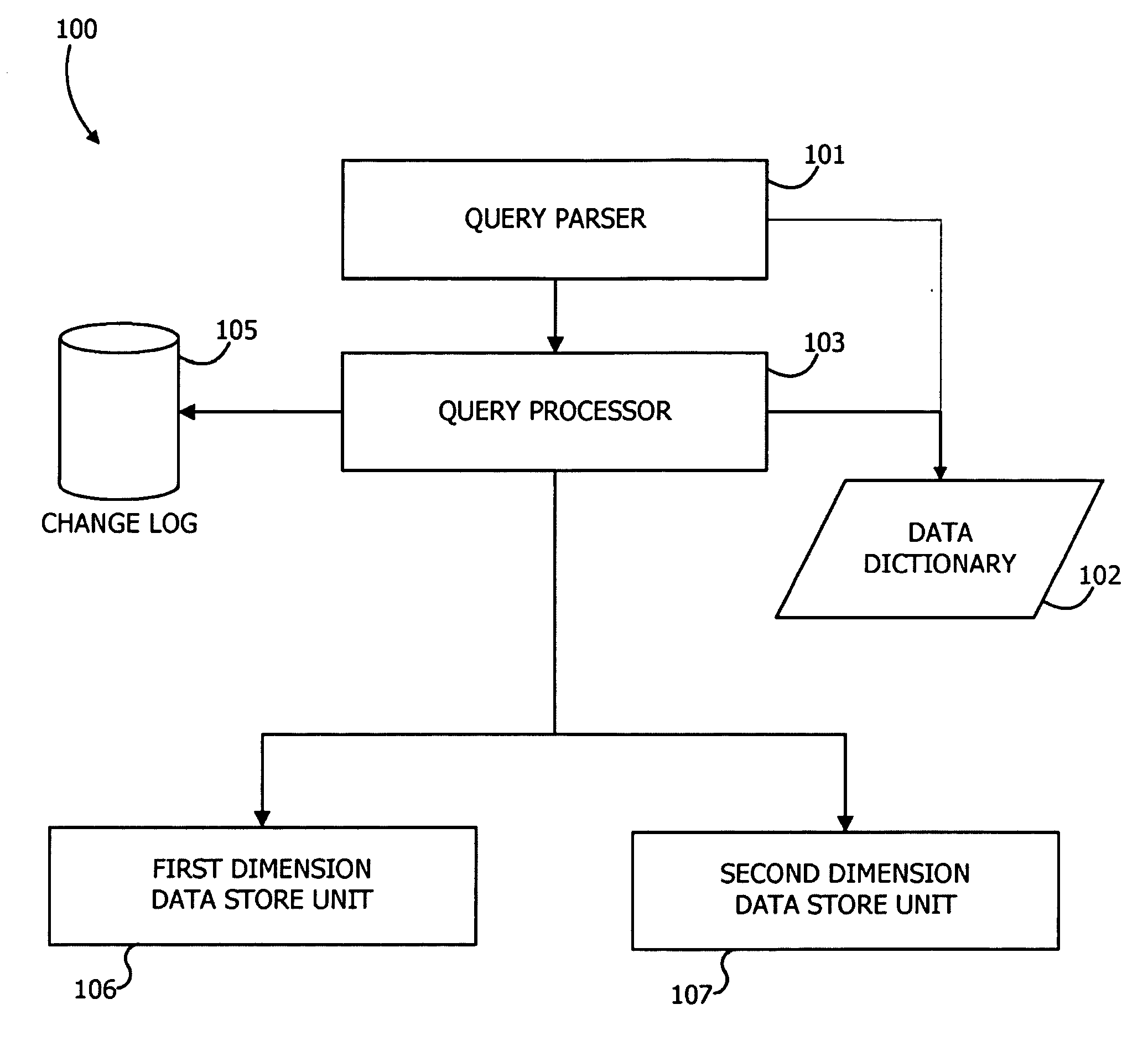Multiple dimenisioned database architecture
- Summary
- Abstract
- Description
- Claims
- Application Information
AI Technical Summary
Benefits of technology
Problems solved by technology
Method used
Image
Examples
Embodiment Construction
[0072]The foregoing description of the organization and operation of prior art database management systems will assist in understanding this invention and the advantages thereof. This invention can best be understood by first describing a logical representation of the basic architecture and storage schemata and then by describing schemata for a specific database and the process by which a query is processed. More specifically, FIGS. 6 through 11E present such a system at a logical level. FIGS. 12A through 13 depict a specific implementation of first and second storage schemata incorporating the data in FIG. 2. FIGS. 14 through 16 depict the process by which the system converts SQL queries shown in FIG. 3A into query plans. A description of a process for updating information in the database and alternate XML implementations follow in FIGS. 17 through 19.
Basic Architecture
[0073]FIG. 6 is a functional block diagram of one implementation of a database management system 100 incorporating...
PUM
 Login to View More
Login to View More Abstract
Description
Claims
Application Information
 Login to View More
Login to View More - R&D
- Intellectual Property
- Life Sciences
- Materials
- Tech Scout
- Unparalleled Data Quality
- Higher Quality Content
- 60% Fewer Hallucinations
Browse by: Latest US Patents, China's latest patents, Technical Efficacy Thesaurus, Application Domain, Technology Topic, Popular Technical Reports.
© 2025 PatSnap. All rights reserved.Legal|Privacy policy|Modern Slavery Act Transparency Statement|Sitemap|About US| Contact US: help@patsnap.com



